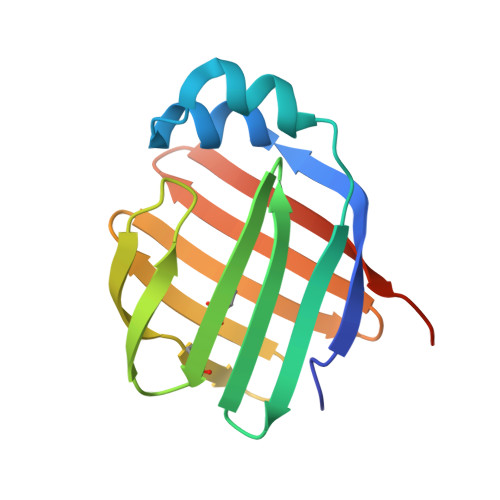Excited-state intermediates in a designer protein encoding a phototrigger caught by an X-ray free-electron laser.
Liu, X., Liu, P., Li, H., Xu, Z., Jia, L., Xia, Y., Yu, M., Tang, W., Zhu, X., Chen, C., Zhang, Y., Nango, E., Tanaka, R., Luo, F., Kato, K., Nakajima, Y., Kishi, S., Yu, H., Matsubara, N., Owada, S., Tono, K., Iwata, S., Yu, L.J., Shen, J.R., Wang, J.(2022) Nat Chem 14: 1054-1060
- PubMed: 35851837
- DOI: https://doi.org/10.1038/s41557-022-00992-3
- Primary Citation of Related Structures:
7DZE, 7DZF, 7DZG, 7DZH, 7DZI, 7DZJ, 7DZK, 7DZL - PubMed Abstract:
One of the primary objectives in chemistry research is to observe atomic motions during reactions in real time. Although X-ray free-electron lasers (XFELs) have facilitated the capture of reaction intermediates using time-resolved serial femtosecond crystallography (TR-SFX), only a few natural photoactive proteins have been investigated using this method, mostly due to the lack of suitable phototriggers. Here we report the genetic encoding of a xanthone amino acid (FXO), as an efficient phototrigger, into a rationally designed human liver fatty-acid binding protein mutant (termed XOM), which undergoes photo-induced C-H bond transformation with high selectivity and quantum efficiency. We solved the structures of XOM before and 10-300 ns after flash illumination, at 1.55-1.70 Å resolutions, and captured the elusive excited-state intermediates responsible for precise C-H bond activation. We expect that most redox enzymes can now be investigated by TR-SFX, using our method, to reveal reaction intermediates key for their efficiency and selectivity.
- Laboratory of RNA Biology, Institute of Biophysics, Chinese Academy of Sciences, University of Chinese Academy of Sciences, Beijing, China.
Organizational Affiliation:


















